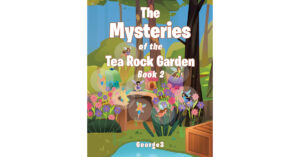TV & MOVIES
Rajinikanth’s ‘Coolie’: Balancing Fan Expectations and Creative Risks in the Digital Age

Rajinikanth’s ‘Coolie’: Balancing Fan Expectations and Creative Risks in the Digital Age
Studio Team CarryOnHarry, July 18, 2025
The pre-release buzz surrounding Rajinikanth’s upcoming film, *Coolie*, highlights the tightrope walk that filmmakers face today: navigating the desires of a dedicated fanbase while maintaining creative freedom in an era of instant information and pervasive online leaks. The recent alleged plot leak offers a glimpse into this complex dynamic.
While details remain speculative, the purported plot points circulating online have undoubtedly generated significant discussion among Rajinikanth enthusiasts. This immediate reaction, fueled by social media and dedicated fan forums, showcases the powerful influence of online communities in shaping pre-release perception. On one hand, this heightened anticipation can translate into box office success. On the other, premature or inaccurate information can lead to disappointment if the final product deviates from the expectations built upon these early leaks. The challenge lies in managing this narrative and ensuring that the official messaging from the production team remains the dominant voice.
One crucial element to consider is the source of these leaks. Are they deliberate marketing tactics designed to generate buzz, or genuine breaches of confidentiality? Regardless of the origin, the impact is undeniable. Filmmakers must now contend with the constant threat of unauthorized information dissemination, forcing them to be more vigilant in protecting their creative assets. It also underscores the importance of crafting compelling marketing campaigns that can effectively counter any potential damage caused by leaks.
The reported involvement of Lokesh Kanagaraj, though unconfirmed, further amplifies the excitement surrounding *Coolie*. Known for his action-packed narratives and intricate plotlines, Kanagaraj’s potential collaboration with Rajinikanth has ignited the imagination of fans eager to see their beloved superstar in a fresh and dynamic role. This anticipation is a testament to the power of director-actor collaborations in generating hype and attracting audiences. However, it also places added pressure on the filmmakers to deliver a product that lives up to the lofty expectations.
Moreover, the leak and the subsequent fan reaction also raise interesting questions about ownership and control in the digital age. While filmmakers retain the intellectual property rights to their creations, the online sphere allows fans to actively participate in the narrative, offering their own interpretations and predictions. This participatory culture can be a valuable asset, providing filmmakers with valuable feedback and generating organic marketing. However, it also requires a delicate balance, ensuring that fan engagement does not undermine the creative vision of the project.
Ultimately, the success of *Coolie* will depend on its ability to transcend the pre-release noise and deliver a compelling cinematic experience. While managing expectations is crucial, filmmakers should not be unduly swayed by external pressures. The true test lies in their ability to stay true to their artistic vision and create a film that resonates with audiences on an emotional level. It needs to entertain, and, hopefully, offer something new to the legend’s body of work.
In conclusion, the *Coolie* situation serves as a microcosm of the challenges and opportunities facing the film industry in the digital age. Balancing the desires of a passionate fanbase with the need for creative freedom requires careful planning, strategic communication, and a unwavering commitment to artistic integrity. The online discourse surrounding the film demonstrates the growing importance of managing pre-release narratives and engaging with audiences in a meaningful way. While leaks and speculation are inevitable, the ultimate success of *Coolie* will hinge on its ability to deliver a captivating cinematic experience that exceeds expectations and reaffirms Rajinikanth’s status as a cinematic icon.
It’s a dance of give and take with the audience now, where the studio has to be aware that the audience is just as much a part of the film’s story as the filmmakers. Keeping the fanbase happy while creating the film in its own image, will ultimately create a better film. A movie that doesn’t pander, but also doesn’t ignore its fans.
The leaks and rumors online are just that – rumors. Only the finished product, released on the big screen, can accurately be judged and appreciated. Speculation, however informed or sourced, can rarely do justice to the creative process and the efforts of the entire cast and crew. Until then, the conversations are premature, and the excitement is understandable. But judgment must be reserved for when the film is properly released.
Rajinikanth’s place in the film industry is secure, and as such, any film he participates in will be dissected and parsed and debated for months before release. *Coolie* is simply the latest example of that, with an added complexity: the modern internet age, and the fan base’s ability to both spread information and create opinion at an unfathomable rate. The studio needs to be as nimble as the fanbase if it hopes to steer the conversation in a productive direction. Otherwise the film can be judged and dismissed before most people even have an opportunity to see it.
This is not to say that studios *should* manipulate opinions; rather, they must participate honestly in the conversation. They must be open and forthright about answering questions, and engaging with fans. Transparency, combined with the studio’s marketing and storytelling, is the most effective tool to ensure that expectations align with the film, and prevent premature judgment.
Ultimately, the creative team behind *Coolie* should focus on delivering a high-quality film that stays true to their vision while acknowledging the expectations of their fanbase. Whether the film delivers or disappoints will define its legacy more than any pre-release speculation.
As a final thought, it is important to consider the impact of these leaks on the actors and crew involved in the production. The constant scrutiny and speculation can be emotionally draining, and it is essential to approach these situations with empathy and respect for the creative process. The focus should remain on celebrating the hard work and dedication of everyone involved in bringing the film to life, rather than dwelling on unsubstantiated rumors and gossip. Let the art speak for itself, and let the audience decide its fate.
While it’s easy to get caught up in the hype and excitement surrounding a new film, it’s important to remember that the true magic of cinema lies in the storytelling. It is the ability to transport us to different worlds, to evoke emotions, and to connect us to something larger than ourselves. Let us approach *Coolie* with an open mind and a willingness to be entertained, and let us allow the film to speak for itself.
The internet giveth, and the internet taketh away. In this case, it has given us a glimpse – real or imagined – into the next Rajinikanth vehicle, *Coolie*. Now, it is up to the studio and the creative team behind the film to take it back. To take back the narrative, and re-craft the story into one that *they* want to tell. The audience is along for the ride, ready and willing to be wowed, surprised, and entertained. It’s up to the filmmakers to make good on the promise, and deliver the goods. If they do that, the leaks and rumors will be long forgotten.
So, let the speculation continue, but let us also remember that the final verdict will be delivered when the lights dim and the credits roll. Until then, let us trust in the creative process and allow the artists to work their magic. For it is in their hands that the true story of *Coolie* will be revealed.
TV & MOVIES
The Evolution of Bollywood Storytelling in the Streaming Era

nbStudio CarryOnHarry Desk — The Evolution of Cinematic Storytelling in the Age of Streaming
As we drift further into the digital age, the landscape of storytelling in cinema continues to transform at a breathtaking pace. The rise of streaming platforms has not only revolutionized how we consume movies and series but also how stories are crafted and presented. The question arises: what does this shift mean for filmmakers and audiences alike? In this article, we will explore the evolution of cinematic storytelling in the age of streaming—an era defined by immediacy, accessibility, and a diversity of voices.
A New Era of Consumption
The introduction of streaming services like Netflix, Hulu, and Amazon Prime has changed the way we approach viewing content. Gone are the days when audiences had to circumnavigate the showtimes of theatres or anxiously wait for DVD releases. Now, with a click of a button, an entire library of films and series is at our fingertips.
This convenience has led to the phenomenon of ‘binge-watching,’ where viewers devour entire seasons in one sitting. With this new behavior, the traditional episodic structure is challenged. Showrunners must now think differently about pacing, creating cliffhangers that entice the viewer to continue watching without a pause. In this context, storytelling ends up merging with viewer engagements, creating a continuous narrative flow that keeps audiences tethered to their screens.
Context: The Birth of Original Content
Streaming platforms initially had the task of providing access to existing content. However, observing viewer habits and preferences led these services to pivot toward creating original content. Netflix’s first foray into original programming, “House of Cards,” was a gambit that set the stage for a streaming revolution. The allure of original programming, combined with the lack of commercial breaks, allows for greater creative freedom. This shift encourages creators to experiment with storytelling formats, and audiences are all the better for it.
The innovation in storytelling is evident in series like “Stranger Things,” where nostalgia and genre-blending captivate audiences in ways traditional cinema often fails to do. Here, filmmakers play with episodic structure while developing rich character arcs over multiple seasons—elements of cinema delivered in digestible chunks.
The Power of Niche Genres
In the expansive library of streaming content, niche genres that may have struggled in theaters now find a thriving audience. From cult-classic animated series to international horror films, streaming platforms democratize storytelling by enabling underrepresented voices to reach global audiences. It eliminates the gatekeepers—those who previously determined what could be successful in cinema, allowing diverse stories to see the light of day.
For cinephiles, this trend presents a dual opportunity: first, the chance to discover hidden gems from far-flung corners of the globe, and second, a more in-depth exploration of genres that resonate with their interests. As a result, the collective cultural consciousness continues to swell, enriched by different perspectives.
Analysis: Character Development in Depth
Character development is one of the most notable strengths of content seen on streaming platforms. Unlike theatrical films, which typically run between 90 minutes to two hours, television series can dedicate significant screen time to character arcs. In the age of streaming, where seasons can extend beyond ten episodes, viewers become intimately familiar with characters’ complexities.
For instance, shows like “The Crown” and “Euphoria” delve deeply into character relationships, allowing writers to explore gray areas and psychologies that would be deemed too intricate for traditional two-hour films. This extended format grants filmmakers latitude to explore various angles of a character’s journey, creating a sense of empathy rarely achieved within a shorter timeframe.
Cultural Angle: A Global Perspective
One of the most significant cultural implications of streaming services is their role in fostering a global cinema culture. Access to international films and series has broadened audiences’ understanding of storytelling traditions from different cultures. The success of Netflix’s “Money Heist” and India’s “Sacred Games” not only showcases international storytelling but also illustrates the willingness of viewers to embrace subtitles and foreign narratives.
This cultural infusion has also inspired local filmmakers to launch their work onto these global platforms. Diverse narratives, from African folklore to Asian horror, bring fresh perspectives to mainstream storytelling. As a result, we witness a richer tapestry of global cinema that celebrates stories outside the West’s historical dominion.
The Impact on Filmmaking
While streaming has revolutionized viewing, it has also led to a significant impact on filmmaking itself. This new era necessitates a shift in how studios approach production, marketing, and distribution. With traditional studios facing competition from streaming giants, even established filmmakers must adapt their storytelling methods and budgets.
Directors are now emphasizing quality over quantity, with platforms greenlighting projects that prioritize innovative narratives and unique artistic voices. The collaborative efforts of writers, directors, and actors can be seen blossoming, leading to daring performances that might not find space in traditional cinema.
Challenges and Criticisms
Despite the palpable excitement about the potential of streaming platforms, concerns linger. The often-predictable algorithms can lead to homogenized content, where studios might prioritize what performs well based on viewer data rather than pushing the envelope creatively. Additionally, the convenience of streaming comes with a downside—the sheer volume of available options can lead to decision fatigue. Amidst this vast ocean of content, how does one find meaning?
Moreover, the traditional theatrical experience is at risk. As direct-to-streaming premieres become commonplace, one has to ponder whether the magic of watching a film in a communal space, surrounded by fellow moviegoers, will become obsolete. This is a debate currently unfolding within industry circles, as many advocate for the preservation of traditional cinema even while recognizing the advantages offered by streaming.
Reflective Closing Thoughts
In summary, the evolution of cinematic storytelling in the age of streaming represents both a significant opportunity and challenge for filmmakers and audiences. It encourages fresh narratives, diverse voices, and the exploration of character complexity, at the same time raising questions about content uniformity and the future of traditional cinema. As streaming continues to mature, there is excitement in the air about what lies ahead. What we can be sure of is that these new storytelling paradigms are merely the beginning; the future of film is a vibrant, unpredictable narrative waiting to unfold.
As we embrace this new cinematic age, let’s remain curious about how technology continues to reshape our collective stories and cultural identities. For both cinephiles and casual viewers, the age of streaming offers an exhilarating landscape filled with endless narratives just waiting to be explored.
Studio CarryOnHarry Entertainment Desk
TV & MOVIES
Akon Faces Divorce as Wife Cites Irreconcilable Differences

September 12, 2025
Akon Faces Divorce as Wife Cites Irreconcilable Differences
Singer Akon and his wife, Tomeka Thiam, are reportedly headed for divorce just before their 29th wedding anniversary. Thiam filed for divorce citing irreconcilable differences, according to court documents obtained by people.com. The date of separation is listed as “TBD.” The couple shares a 17-year-old daughter named Journey. Thiam is seeking joint legal custody but prefers to have physical custody of Journey, with Akon granted visitation rights. She has also requested spousal support and asked that Akon not be awarded any spousal support.
Akon, known for hits like “Right Now,” made his Bollywood debut with “Chammak Challo” and “Criminal” in the film *Ra.One*. Akon has previously stated his belief in polygamy and, in a 2022 interview, mentioned having nine children. In 2023, musician Amirror claimed to be one of Akon’s four wives.
In a 2022 interview, Akon defended polygamy, stating, “(Polygamy is) part of our culture. Absolutely. For me, it looks normal because it’s culture for us. We didn’t go outside of our African culture when we got to the Western world. See, the flaw that the Western world made is they created all these rules without putting nature into account.”
The “Smack That” singer also affirmed his commitment to his children, saying it was his responsibility “to raise my kids to be responsible, to be understanding and to protect their mother.” He added, “My job ain’t to be doing all that extra stuff and these holidays and recitals. While I’m taking care of my responsibility to make sure the family has a roof over their head and food, if I have the time to do that and show love, yes, I will do that.”
Akon emphasized the importance of communication in maintaining relationships with his children, stating, “Communication allows me to be there every day. That’s what my FaceTime phone is for.” He also expressed his view that both marriage and dating constitute “real relationship(s).”
-

 Editor's Choice2 weeks ago
Editor's Choice2 weeks agoRanveer Singh and Deepika Padukone Reunite for New Romantic Comedy
-

 Editor's Choice6 months ago
Editor's Choice6 months agoReview: Rekhachithram (2025) – A Masterful Blend of Mystery and Redemption
-

 Authors and Artists4 years ago
Authors and Artists4 years agoCreate Your Miraculous Life: It’s Never Too Late Wendy L. Darling
-

 People's Choice2 months ago
People's Choice2 months agoBollywood in August 2025: A Landscape of Sequels, Social Commentary, and Star Power






